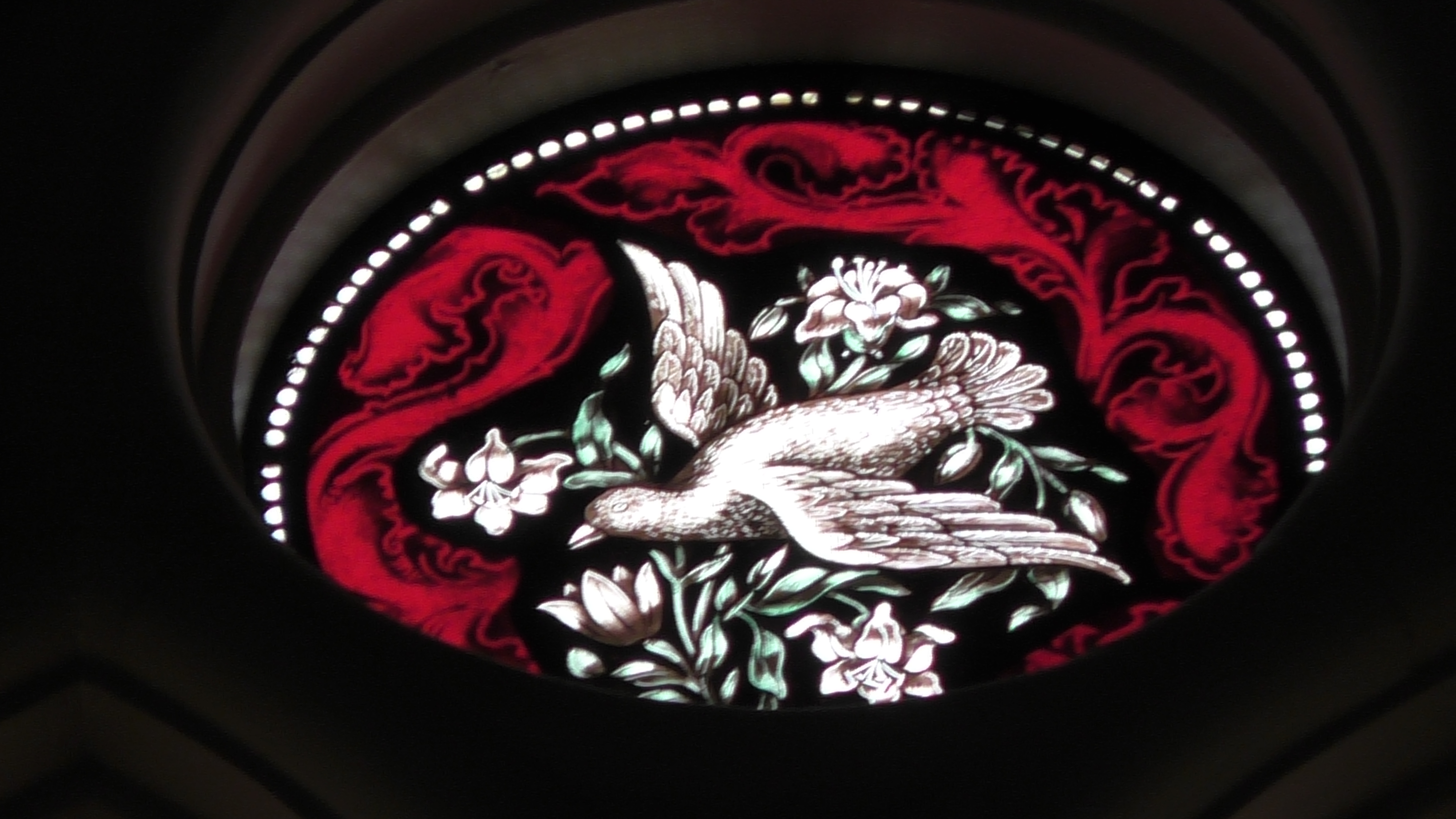 To the right of the stained glass in the center is the harp of David. How the Germans love their sacred music. Good music at that. How many of you remember the album that was cut by St Joseph church? Do you still have it?
To the right of the stained glass in the center is the harp of David. How the Germans love their sacred music. Good music at that. How many of you remember the album that was cut by St Joseph church? Do you still have it?
Music is such a powerful expression. But do we use it to build ourselves and society up, or does it mindlessly lead us to misery? Music makes everything seem fun and draws us in. But what is the lasting effect? Does it lead us to Jesus, the virtues and all that is holy? Or does it lead us to vice, justification and just doing before thinking things through. What is so nice about sacred music is that it will always bring us closer to Jesus, as long as there is nothing heretical (false teachings) about it. It should always aid us in worshipping the Blessed Trinity. In the Catholic Church, chant takes the “pride of place” (Paragraph 116, Sacrosanctum Concilium of the Second Vatican Council). The sacred texts of Chant were written first, usually taken from Sacred Scripture; and then music was put to the text. They are explicitly prayers put to music. No wonder it seems to lift us up to the heavens. The grace of Sacred Scripture itself cannot fail, let alone when you put it to such beautiful music.
King David is the person who started sacred music in worship. Before David, there was no music in worship. He wrote the first 50 psalms by himself and the rest are attributed to him. Great prophesies also came from them. Read Psalm 22 and you can easily see the prophesy of the crucifixion of Jesus. Since his time, sacred music has been lifting souls out of this messy life and into the halls of the angels singing. It truly is an experience of the divine.
There are few people today who know how to read chant, making it hard to have this kind of sacred music. Though Gregorian Chant has “pride of place,” modern notation music can be used, provided that there are no false teachings in it. Music teaches us. We use music to teach our kids many things. I learned the alphabet and would learn the difference between a bill and law by music on TV. Have you read the text of the music we sing? What does it mean? Does it have any connection to the readings or psalms or the homily?
 The dove is the next window. There are two different things it can symbolize. The first is a reminder of the great flood during Noah’s time. God sent Noah to start building an ark so that two of each animal could make it on the ark before the rains came. It rained so hard and so long that the entire area was covered with water; not even a tree was around. It took forty days before a dove came back with an olive branch as proof that land was not far away. God has made a new beginning of life, and the dove came back with an olive branch as proof of it.
The dove is the next window. There are two different things it can symbolize. The first is a reminder of the great flood during Noah’s time. God sent Noah to start building an ark so that two of each animal could make it on the ark before the rains came. It rained so hard and so long that the entire area was covered with water; not even a tree was around. It took forty days before a dove came back with an olive branch as proof that land was not far away. God has made a new beginning of life, and the dove came back with an olive branch as proof of it.
The second meaning of this symbol is the Holy Spirit, the third person of the Holy Trinity. I do not think this is an accident. I believe the Holy Spirit was there as God was renewing the face of the earth through the flood, “making a new beginning of holiness” (Rite of blessing of holy water during baptism). Wherever God is doing His work, the Holy Spirit is there. It is the Holy Spirit that descends upon the gifts at Mass and makes the bread and wine the body and blood of Jesus. It is also the Holy Spirit that guides us in doing God’s work. All that are baptized are holy and sacred temples of God by the Holy Spirit given to them as 1 Corinthians says, “Do you not know that your bodies are temples of the Holy Spirit?” (6:19). It is the gift of God himself. Yes, the Holy Spirit lives here. He also renews the promise of the gift of himself when we receive Him in the Eucharist. “Amen, come Lord Jesus” (Rev 22:20).
